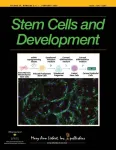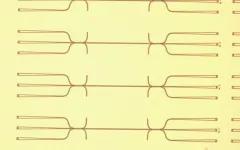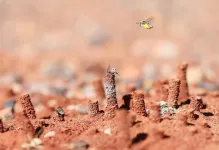(Press-News.org) New mums should be strongly encouraged to begin clocking up at least two hours of moderate to vigorous intensity physical activity such as brisk walking and muscle strengthening exercises each week in the first three months after birth, when physically able, to improve health and well-being, say experts in a new guideline published by the British Journal of Sports Medicine.
They also strongly recommend daily pelvic floor muscle training to reduce the risk of urinary incontinence, and taking steps to improve sleep quality and duration.
In the weeks and months following birth (postpartum period), risk of depression, weight retention, sleep disorders, diabetes, and cardiovascular disease increases, especially after pregnancy complications. But clear guidance on how to appropriately engage in postpartum physical activity is severely lacking.
To address this, a panel of expert researchers and clinicians set out to provide up to date, evidence-based guidance on physical activity, sedentary behaviour, and sleep throughout the first year after childbirth.
Their recommendations are based on in-depth analyses of evidence from 574 studies and are relevant to those who have recently given birth, irrespective of breastfeeding status, gender, cultural background, disability, or socio-economic status.
After consulting with new mums, the panel selected 21 ‘critical’ and ‘important’ outcomes for analysis. These included injury, reduced breast milk quality or quantity, depression and anxiety, urinary incontinence, fear of movement, fatigue, and poor infant growth and development.
The quality and certainty of evidence for each outcome was evaluated using the GRADE system.
Based on this evidence, the panel strongly recommends that in the first 12 weeks after giving birth, new mums with no conditions or symptoms preventing them from being physically active should aim for a mix of aerobic and resistance activities (eg, brisk walking, cycling and muscle strengthening exercises) for at least 120 minutes each week, spread over four or more days of the week.
Those with underlying conditions or symptoms should seek medical advice before beginning or returning to moderate physical activity, they add. However, they stress that everyone who has recently given birth should be doing light daily activities such as gentle walking, to prevent the known harms of inactivity.
Other strong recommendations include daily pelvic floor muscle training to reduce the risk of urinary incontinence and rehabilitate pelvic floor muscles, and developing a healthy sleep routine (eg, avoiding screen time and maintaining a dark, quiet environment before bed) to support mental health.
New mums who follow this guideline, produced by the Canadian Society for Exercise Physiology, are likely to reap many health benefits, including reduced depression, urinary incontinence, and low back pain, and improvements in weight, cholesterol levels, and fatigue, with no increased risk of injury or adverse effects on breastmilk quality or quantity, they explain.
They acknowledge that meeting these recommendations may not always be possible, but say “even small steps towards achieving them will still promote physical and mental health benefits.”
And while future research will need to address gaps in the literature, they argue that these clinically meaningful benefits “strongly support incorporating consultation and guidance on movement behaviours into clinical practice for the postpartum period.”
Feedback also indicates that following these recommendations would be feasible, acceptable and equitable, and likely to incur minimal costs to individuals and health systems, while yielding significant healthcare savings.
END
New mums advised to do two hours of moderate to vigorous exercise a week
Daily pelvic floor muscle training also strongly recommended. Following this new guideline is likely to result in large improvements in maternal and infant health and well-being, say experts
2025-03-25
ELSE PRESS RELEASES FROM THIS DATE:
Milk as Medicine: New Study Shows Breast Milk Transforms Challenges into Triumphs
2025-03-25
OKLAHOMA CITY – In 2010, University of Oklahoma researcher David Fields, Ph.D., was pouring over research data when he discovered something he thought was odd: His data showed that at 6 months of age, formula-fed babies born of mothers who were categorized as medically obese weighed about 5% units less fat than breastfed babies in the same dataset. That discovery struck him as unusual and led him on a research journey to better understand breast milk. Now, he’s studying the connections between maternal gestational diabetes, breastfeeding and infant health.
Fields is part of the research team behind a recent study ...
CU Cancer Center researchers identify the ‘switch’ that allows intestinal cells to regenerate after injury
2025-03-25
Researchers from the University of Colorado Cancer Center have solved a cellular mystery that may lead to better therapies for colorectal and other types of cancer.
Peter Dempsey, PhD, professor of pediatrics–developmental biology in the CU School of Medicine, and Justin Brumbaugh, PhD, assistant professor of molecular, cellular, and developmental biology at CU Boulder, recently published a paper in the journal Nature Cell Biology showing the importance of the H3K36 methylation process in regulating plasticity and regeneration in intestinal cells.
“The intestine has an ...
Special issue of Academic Emergency Medicine explores the science of errors in emergency care
2025-03-25
Des Plaines, IL — Academic Emergency Medicine (AEM), the peer-reviewed journal of the Society for Academic Emergency Medicine (SAEM), has published its March issue dedicated to the topic of errors in emergency care, with a strong emphasis on diagnostic error. This special issue, supported by the Agency for Healthcare Research and Quality (AHRQ), brings together leading scholars and clinicians to discuss aspects of errors relevant to emergency care and propose actionable solutions.
Following the landmark 2015 National Academies report, “Improving Diagnosis in Healthcare,” national awareness of diagnostic errors has increased significantly. Errors—ranging from ...
Organoid fusions as models to study meninges-brain signaling
2025-03-25
A new study in the peer-reviewed journal Stem Cells and Development describes the development of a co-culture system of neural organoids generated from human induced pluripotent stem cells (iPSCs) fused with fetal leptomeninges from mice with fluorescently labeled meninges, called leptomeningeal neural organoid (LMNO) fusions. Click here to read the article now.
Vivian Gama, PhD, from Vanderbilt University, Julie Siegenthaler, PhD, from University of Colorado Anschutz Medical Campus, and coauthors, present a proof-of-concept study that tests the stability of the different cell types in the leptomeninges (fibroblasts and macrophages) and the fused neural organoid ...
A multimodal light manipulator
2025-03-25
Interferometers, devices that can modulate aspects of light, play the important role of modulating and switching light signals in fiber-optic communications networks and are frequently used for gas sensing and optical computing.
Now, applied physicists at the Harvard John A. Paulson School of Engineering and Applied Sciences (SEAS) have invented a new type of interferometer that allows precise control of light’s frequency, intensity and mode in one compact package.
Called a cascaded-mode interferometer, it is a single waveguide on a silicon-on-insulator ...
OU researcher leverages technology for alcohol disorder interventions in primary care
2025-03-25
OKLAHOMA CITY – According to the Centers for Disease Control and Prevention, 1 in 7 adults in the United States will experience a substance use disorder during their lifetime. University of Oklahoma College of Medicine faculty member Brandi Fink, Ph.D., is working with primary care clinics and health care systems to identify people with an alcohol use disorder and intervene early before the problem worsens.
Fink, an associate professor in the Department of Psychiatry and Behavioral Sciences, created an assessment for patients to fill out on an iPad while waiting for an appointment ...
Automated lead nurturing boosts sales—but only under the right conditions
2025-03-25
Businesses invest billions in marketing automation, and many assume that Automated Lead Nurturing (ALN) is a proven driver of sales. However, a new Journal of Marketing study reveals that ALN is not a one-size-fits-all solution. The research finds that while ALN improves engagement and enhances salesperson–lead interactions, its impact on sales conversions varies significantly across industries and customer segments.
Authored by Johannes Habel (University of Houston), Nathaniel Hartmann (University of South Florida), Phillip Wiseman (Texas Tech University), Michael Ahearne (University of ...
Lessons from Venezuela’s democratic collapse: How opposition movements can defy autocratic leaders
2025-03-25
Until the 1990s, Venezuela was home to one of the most established democracies in Latin America. Today, however, it stands as one of the region’s most firmly entrenched authoritarian regimes.
How did this shift occur, and what can other countries learn from Venezuela’s transformation?
A new paper from political scientist Laura Gamboa at the University of Notre Dame chronicles the country’s 25-year evolution, during which Hugo Chávez and his successor, Nicolás Maduro, destroyed ...
USU ecologists document Utah's bee species and say beehive state is rich in bee diversity
2025-03-25
TOOELE, UTAH, USA -- Wildlife conservation is critical to sustaining the planet’s biodiversity and health. But putting together a conservation plan is a tall order. First of all, you need to determine what species you’re conserving, along with their numbers, habitat needs, threats and how they fit into a complex ecosystem.
As pollinators for native plants and food crops, bees play a pivotal role in our ecosystem, according to Utah State University ecologist Joseph Wilson. He and undergraduate researcher Anthony Hunsaker took on the herculean task of documenting Utah’s bee species using online occurrence records from the Symbiota Collection of Arthropods ...
A hit of dopamine tells baby birds when their song practice is paying off
2025-03-25
DURHAM, N.C. -- In his home office in Durham, Duke neuroscientist Richard Mooney shows a series of images of a bird’s brain on song.
In one, what looks like a pointillist painting illustrates a young zebra finch’s myriad attempts to sound more like an adult, capable of wooing a mate. In another, squiggly lines trace the ebb and flow of chemical signals in the reward circuit of the bird’s brain.
“Their songs don’t sound like much at first,” said Mooney, who has studied birdsong for four decades.
That’s because some things take considerable practice to master. Nobody walks onto a tennis court for the first time and plays ...
LAST 30 PRESS RELEASES:
Sea reptile’s tooth shows that mosasaurs could live in freshwater
Pure bred: New stem cell medium only has canine components
Largest study of its kind highlights benefits – and risks – of plant-based diets in children
Synergistic effects of single-crystal HfB2 nanorods: Simultaneous enhancement of mechanical properties and ablation resistance
Mysterious X-ray variability of the strongly magnetized neutron star NGC 7793 P13
The key to increasing patients’ advance care medical planning may be automatic patient outreach
Palaeontology: Ancient tooth suggests ocean predator could hunt in rivers
Polar bears may be adapting to survive warmer climates, says study
Canadian wildfire smoke worsened pediatric asthma in US Northeast: UVM study
New UBCO research challenges traditional teen suicide prevention models
Diversity language in US medical research agency grants declined 25% since 2024
Concern over growing use of AI chatbots to stave off loneliness
Biomedical authors often call a reference “recent” — even when it is decades old, analysis shows
The Lancet: New single dose oral treatment for gonorrhoea effectively combats drug-resistant infections, trial finds
Proton therapy shows survival benefit in Phase III trial for patients with head and neck cancers
Blood test reveals prognosis after cardiac arrest
UBCO study finds microdosing can temporarily improve mood, creativity
An ECOG-ACRIN imaging study solves a long-standing gap in metastatic breast cancer research and care: accurately measuring treatment response in patients with bone metastases
Cleveland Clinic presents final results of phase 1 clinical trial of preventive breast cancer vaccine study
Nationally renowned anesthesiology physician-scientist and clinical operations leader David Mintz, MD, PhD, named Chair of the Department of Anesthesiology at the UM School of Medicine
Clean water access improves child health in Mozambique, study shows
Study implicates enzyme in neurodegenerative conditions
Tufts professor named Fellow of the National Academy of Inventors
Tiny new device could enable giant future quantum computers
Tracing a path through photosynthesis to food security
First patient in Arizona treated with new immune-cell therapy at HonorHealth Research Institute
Studies investigate how AI can aid clinicians in analyzing medical images
Researchers pitch strategies to identify potential fraudulent participants in online qualitative research
Sweeping study shows similar genetic factors underlie multiple psychiatric disorders
How extreme weather events affect agricultural trade between US states
[Press-News.org] New mums advised to do two hours of moderate to vigorous exercise a weekDaily pelvic floor muscle training also strongly recommended. Following this new guideline is likely to result in large improvements in maternal and infant health and well-being, say experts





